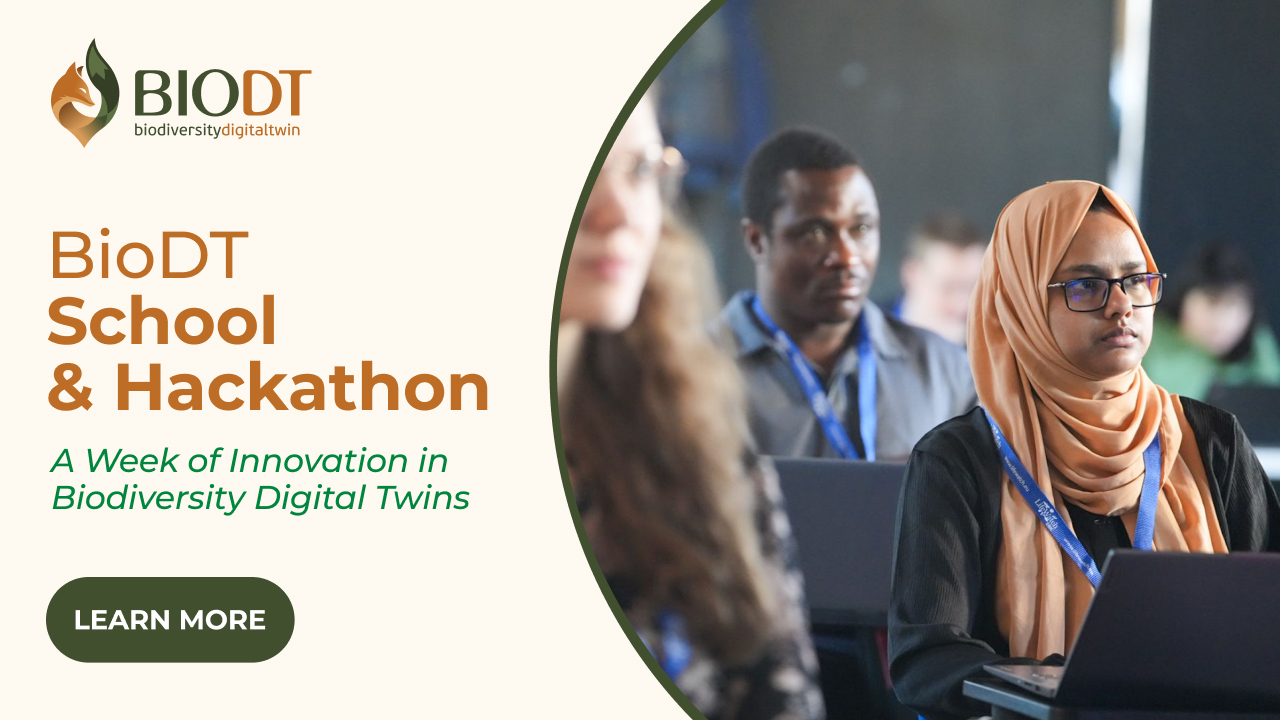
Between history and innovation, here is the BioDT School & Hackathon! This exciting event brought together 20 students, early-career researchers, and professionals from across Europe and beyond to develop their skills in digital modeling and explore the latest innovations in biodiversity. Hosted at the LifeWatch ERIC premises in Lecce, Italy, the School & Hackathon provided our students with interactive and hands-on learning experience.
School is in session: how to develop a Digital Twin
The BioDT School provided a unique opportunity to engage with Digital Twin technology, an emerging tool with cross-disciplinary use, yet with untapped potential in monitoring, calculation and mitigation efforts. As Prof. Alberto Basset (Università del Salento, LifeWatch ERIC) explains:
"Digital Twin is a new technology in the world of biodiversity. Biodiversity is far more complex than we often realise, as it can be studied from multiple perspectives—ranging from zoology to living systems. With climate change posing significant threats, Digital Twins allow us to model scenarios to better understand how our society and all living systems may be impacted."
The week kicked off with an introduction to the BioDT prototype digital twins. Gabriela Zuquim (CSC - IT Center for Science & BioDT scientific coordinator) highlighted the impact of the programme, emphasising how it can help students advance their careers and inspire future research. With sessions from Desalegn Chala (PhD), University of Oslo and Taimur Khan, Helmholtz Centre for Environmental Research (UFZ) learned what key components are included for the Digital Twin prototype building.
Coinciding with World Wildlife Day, participants explored the Cultural Ecosystem Services prototype Digital Twin (pDT), focusing on the Cairngorms National Park in Scotland. Insights from students included:
- Scalability - The need for greater standardisation and structured data.
- Dynamic Updates - Real-time data integration for accuracy.
- User Engagement - Development of an app for real-time biodiversity monitoring.
- Ethics & Sustainability - Aligning pDTs with environmental policies.
Understanding importance of FAIR and Open Science
Sessions with Dmitry Schigel (GBIF) and Dag Endresen (University of Oslo) emphasised the importance of data citation, metadata, and transparency in research. Julian Lopez Gordillo (Naturalis Biodiversity Center) introduced FAIR Digital Objects, promoting findable, accessible, interoperable, and reusable data.
High-Performance Computing and ShinyApp: Supporting the Development of Digital Twins
Under the guidance of Tomáš Martinovič (IT4Innovations National Supercomputing Center) and Tuomas Rossi (CSC – IT Center for Science), students had the opportunity to explore the functionalities of High-Performance Computing (HPC) through hands-on sessions. They were introduced to the LUMI web interface and Jupyter Notebooks, and learned the basics of running jobs on HPC systems. The training also included practical demonstrations of two tools used in digital twin modelling and visualisation: LEXIS and ShinyApp.
Theory into practice: Applying Knowledge during the Hackathon
The week culminates in the BioDT Hackathon, where students tackle three major challenges:
Building a Digital Twin - Prototyping with Virtual Research Environments (VRE).
Conceptual Challenge - Proposing new Digital Twin applications.
High-Performance Computing - Optimising models for LUMI.
With expert guidance, students presented their solutions and showcased their understanding of Digital Twins in biodiversity research.
Curious to learn more about the practical applications of BioDT? Discover our prototypes!